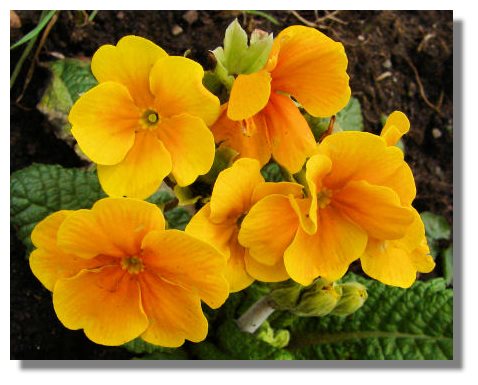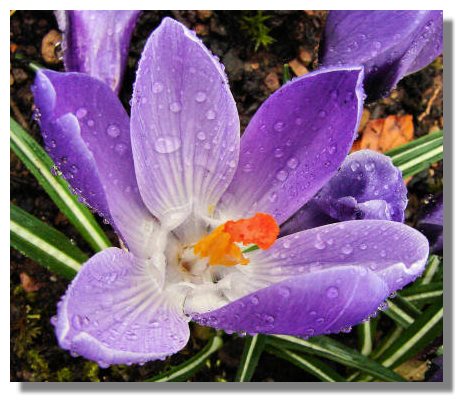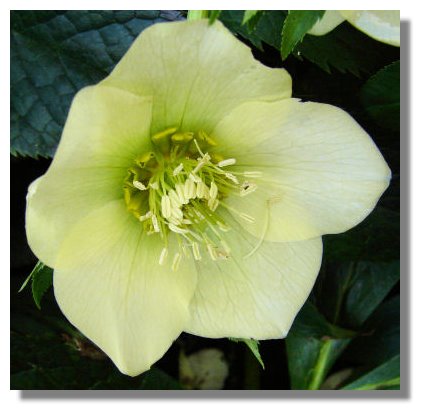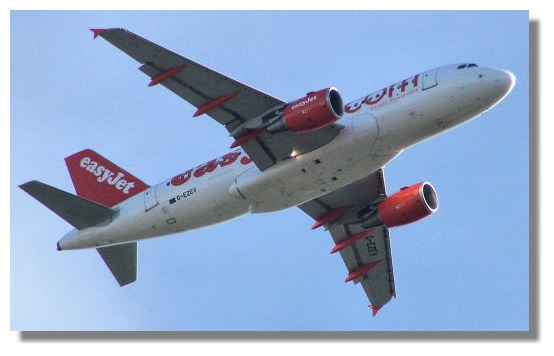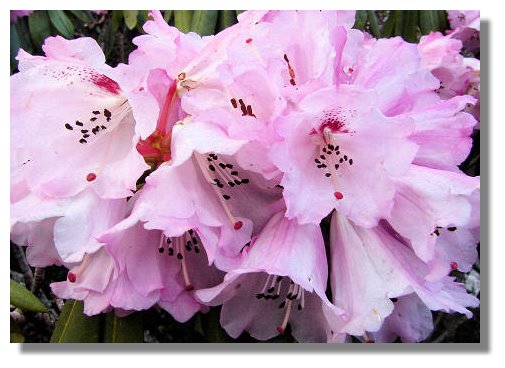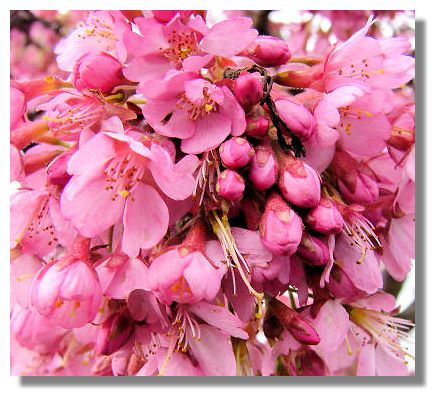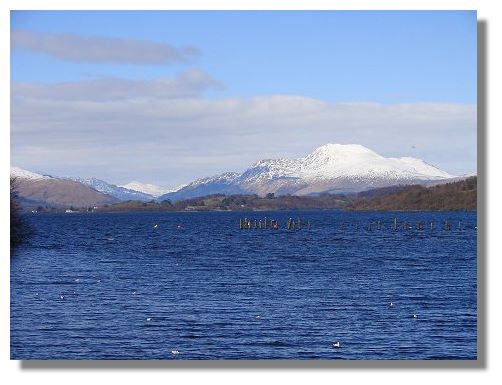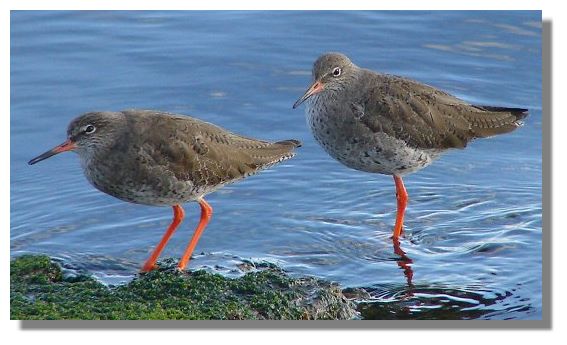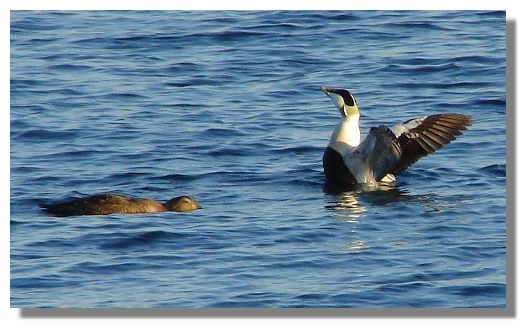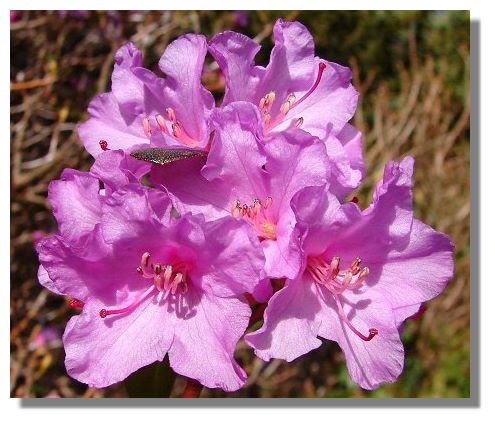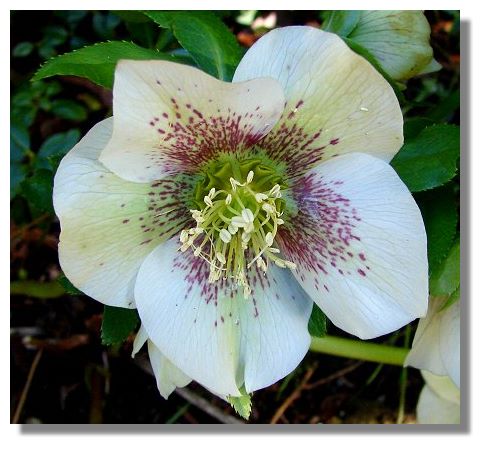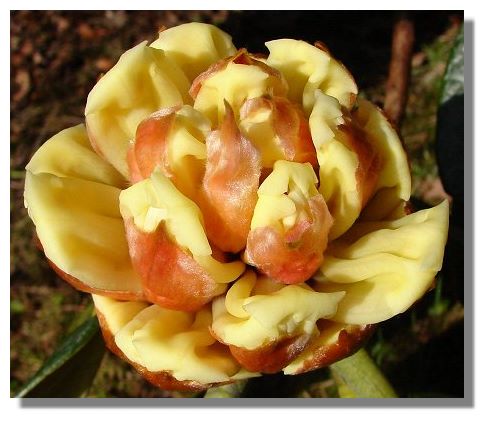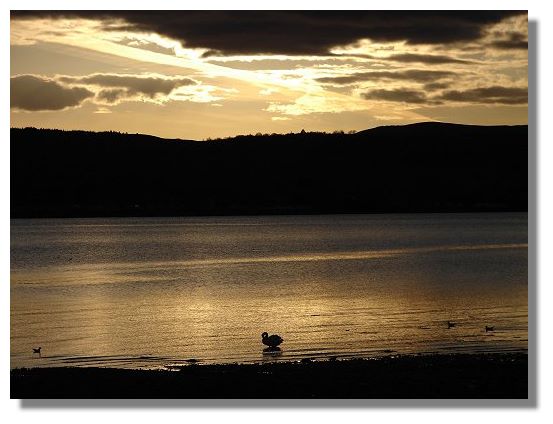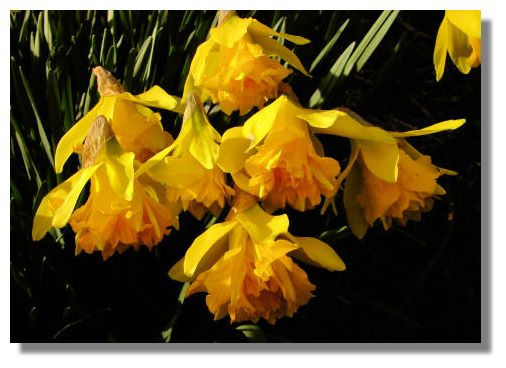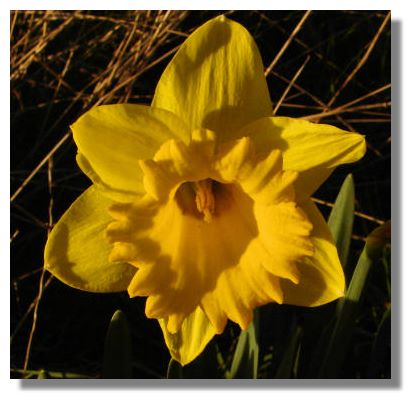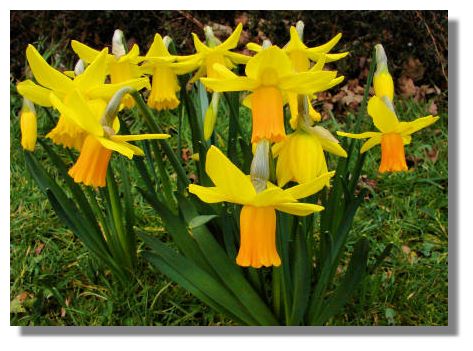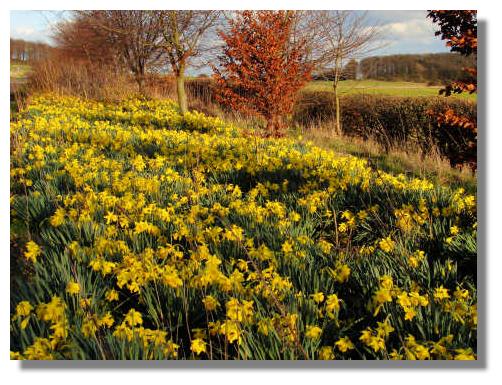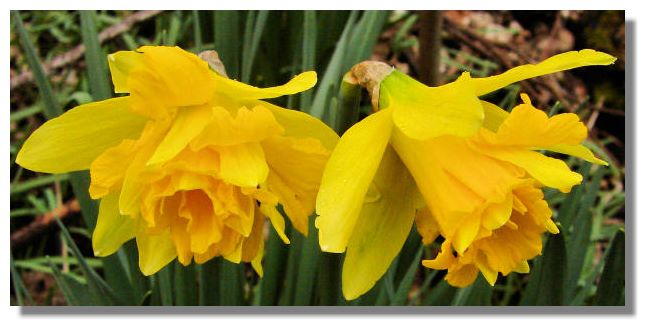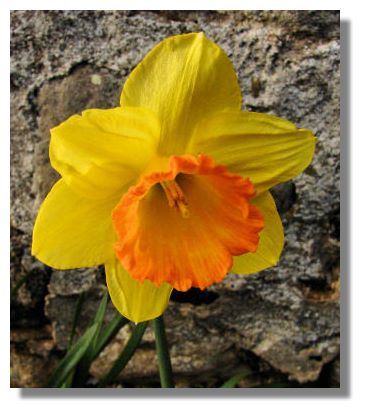Polyanthus plants were originally created by crossing Primroses with Cowslips - a taller variety the Primrose. Over the years plant breeders have created a huge variety of colours. Although they are spring flowering (and autumn/fall flowering too), these ones beside a country church north of Glasgow, were probably brought on under glass to make them available outside so early in the year.
Every time I see raindrops on flowers such as this Crocus, I am tempted to add a water spray to my camera equipment, so that the effect can be created at any time! So far, the temptation has been resisted - after all, there is so much natural rain around, who needs to create it artificially?
The large cup-shaped flowers of the Helleborus can appear from mid-winter to late spring. From a photography point of view, they can be most frustrating as many varieties produce their flowers pointing down to the ground - and they prefer partial shade. This one in Finlaystone Country Estate in Renfrewshire was more co-operative!
While the 20X lens on my camera was bought because of an interest in bird-watching (the feathered kind), it also comes in handy for another hobby - aviation. This budget airline easyJet Airbus A319 was on its approach to Glasgow airport when this picture was taken - with the sun glinting on its nose. But it was still a few thousand feet high, with another eight miles to go before touchdown.
March is not really a month associated with rhododendron flowers, but a few varieties like this one flower very early, creating a promise of much more to come in April and May.
This is another early flowering variety - this time one of the many types of prunus. It could be cherry, almond, plum or peach etc. But as they are usually grown for their attractive spring flowers, we don't often see any fruit being produced later in the season.
Some of the snow which fell earlier was still lying on the top of Ben Lomond and the other mountains around Loch Lomond when this picture was taken. The sun came too, creating this bright - if chilly - scene.
There are a number of pairs of Redshank in residence along the shingle at Helensburgh, on the Firth of Clyde. Each duo seems to have their own patch on which they paddle around to feed. They may move away soon, to nesting sites on wet grassland or low moorland areas.
These Eider Ducks are courting one another, with the male rising up out of the water and the less colourful female crouching low. Eider ducks can be found all round the coast of Scotland, preferring remote, off-shore rocky areas to roost at night. There were quite a number of Eiders swimming and displaying on the Firth of Clyde, off Helensburgh.
The cold weather in March has kept back a lot of the flowers but this Rhododendron in the garden at Glenarn House in Rhu had managed to burst into bloom - and avoid frost damage at night. Glenarn opens to visitors on 21 March, but many of the rhododendrons at Glenarn (which were in flower at this time last year) were still in bud. The snow had also caused a bit of damage and brought down a number of branches. But there are plenty of shrubs and trees at Glenarn still to flower. Another visit in a few weeks time is certainly likely - by that time the magnificent Magnolias will also be in all their glory!
This shade-loving Helleborus was undaunted by the low temperatures and was in full bloom at Glenarn.
This picture could be a candidate for a "What is it?" competition. It is the flower of a large Rhododendron, just bursting out of its bud, in the garden at Glenarn House, Rhu.
Regular readers know that pictures of sunsets have been featured here on a number of occasions - and here's another one! The swan and mallards in the foreground seem to add to the peaceful nature and the "silver lining" of the clouds.
There is no doubt that daffodils (also known as narcissi) have become a potent symbol of springtime. They may not be the earliest flowering bulb in the garden, but their profusion and bright colour make them stand out.
This photograph shows the traditional golden daffodil with its frilly trumpet. It was taken late in the afternoon as the low sun cast deep shadows but the flower itself was in the bright sunlight.
Over the years, variants of the basic daffodil have been developed - this one has a long orange trumpet and the petals seem to dance in the breeze!
Most of the daffodils on this page were growing along the Fife Coastal Path between Dalgety Bay and Aberdour, with views across the Firth of Forth to Edinburgh in the distance.
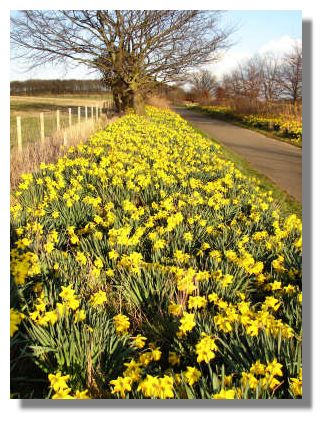
This mass of daffodils has been planted by volunteers in aid of the Marie Curie cancer care charity. The daffodil is their symbol and the charity has organised a number of such mass plantings of daffodils. But this has to be one of the best, as it stretches on and on, along the pedestrian (and cycle) pathway.
In recent years, horticulturalists have developed a variety of different versions of the basic daffodil, including this attractive double trumpet version.
This orange trumpet variety was growing against a wall in the churchyard of St Fillans, next door to Aberdour Castle.
If you want to look back at other editions of these photos of Scotland week by week, there is an Index Page

Where else would you like to go in Scotland?


